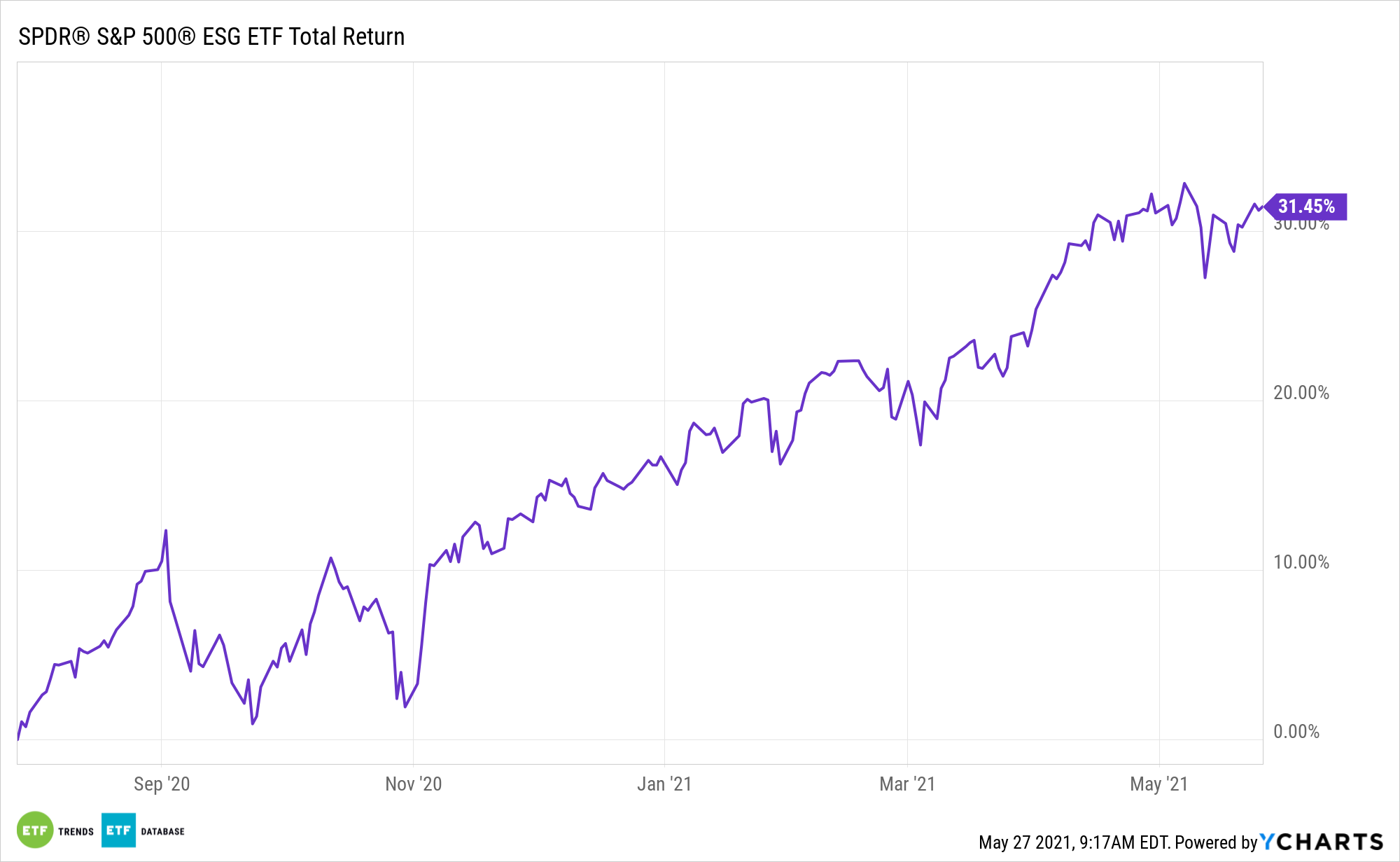In one of the most widely anticipated additions to the benchmark domestic equity gauge in years, electric vehicle (EV) giant Tesla (NASDAQ: TSLA) finally joined the S&P 500 last December.
Despite Tesla’s status as a leading clean technology company and one of the largest EV manufacturers in the world, its addition to the S&P 500 didn’t mean immediate inclusion in the S&P 500 ESG Index and exchange traded funds tracking that index, such as the S&P 500 ESG ETF (EFIV).
EFIV’s underlying index rebalanced earlier this month, with Elon Musk’s company finally getting the membership nod. As of May 25, Tesla is the seventh-largest component in the State Street ETF at a weight of 1.73%, according to issuer data.

Why It Took So Long
In theory, Tesla is a natural choice for inclusion in any number of environmental, social, and governance (ESG) indices. At least that’s the conventional wisdom, but the EV company took awhile to join the EFIV roster, due in large part to the underlying index’s methodology.
“Tesla’s entry into the S&P 500 ESG Index could be due to the index methodology as much as Tesla’s own improvement from a sustainability perspective,” said S&P Dow Jones Indices. “Tesla’s S&P DJI ESG Score was 22 out of 100 (up 8 points from last year’s score), driven by its ESG Dimension Scores, including an Environmental score of 28 (up 1 point), a Social score of 6 (up 2 points), and a Governance score of 49 (up 21 points).”
Said differently, Tesla made improvements where necessary, boosting its various scores and made the cut for inclusion in the S&P 500 ESG Index. One lesson for investors: although EFIV is a passively managed fund, its roster may turn over more than traditional index-based strategies.
Likewise, it’s possible for companies’ ESG scores to decline to point that they’re removed. Tesla may be an EFIV holding today, but there can be no assurances that’s a permanent scenario. It’s got work to do to keep that membership up.
“Its current size does not ensure it will stay a constituent in the index in perpetuity—the company must still pass the minimum ESG score threshold eligibility criterion at each annual rebalance, and of course must not become involved in controversial weapons, tobacco, or thermal coal,” according to S&P. “The company must also remain in good standing with the UN Global Compact.”
For more news, information, and strategy, visit the ESG Channel.
The opinions and forecasts expressed herein are solely those of Tom Lydon, and may not actually come to pass. Information on this site should not be used or construed as an offer to sell, a solicitation of an offer to buy, or a recommendation for any product.

